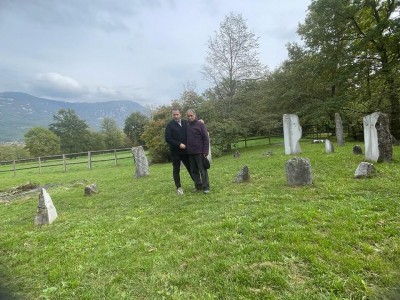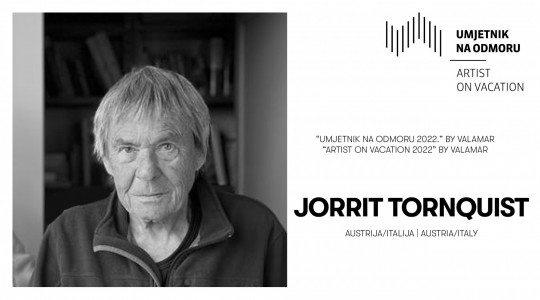
PERMANENT AVANT-GARDE
KUAD Gallery, Istanbul
The turbulent history of the 20th century in the region which used to be called Yugoslavia and today, to the dismay of some, is known as the West Balkans, has been one of a continuous sequence of simultaneously occurring wars and revolutions at thirty year intervals. However, this melting pot, squashing catholic, orthodox and islamic religions and cultures into a small area, besides being a cradle of international and ethnic conflicts, is also a home of significant artistic creativity.
WWI started after the assassination of Archduke Franz Ferdinand of Austria in Sarajevo and ended with formation of the kingdom of Yugoslavia. WWII induced in the region one of the most daring and successful partisan uprising against fascist forces, but also unleashed bloody ethnic fighting. Ethnic tensions were suppressed after the war in the decades of a one-party socialist rule under the leadership of charismatic Marshal Tito, only to explode again in the 1990s in atrocities not seen in Europe since the WWII and resulting in formation of the independent national states. Each of these revolutionary changes in geopolitical entities aimed to create a new society by erasing any links with the previous one. Ensuing ethnic and class violence wiped out the most productive strata of society. Amidst this background of totalitarian regimes and ethnic clashes causing societal discontinuity and generational anxiety, the continuation of art practices, the very thread of the creativity and cultural life in tune with contemporary international art movements, created the only stable social fabric. At the turn of this millennium each of the recently established national states turned to their separate medieval origins in order to create a solid basis for their national identities, neglecting in the process the rich modernist and avant-garde tradition of their common past.
After WWII socialist Yugoslavia endorsed modernism and abstract art at the level of state aesthetics, thus signifying a difference from the rest of the Communist block. So-called state modernism focused on the formal aspects of creativity and creation of art objects and was intensively supported by public institutions, while art practices that aimed to enhance social change towards participatory democracy, or at least to improve the cultural context, were pushed to the margins of public interest and institutional representation. In this manner the creativity of the true heirs of completely neglected pre-WWII radical art practices came to be referred to as the “art of the second line”. But the flame that had ignited the existence of avant-garde artists of the 1920s and 1930s, that had established art magazines such as Zenit, pursued constructivist aesthetics, taking over futurist energy, Dadaist and surrealist rebellion and, later, social utopias, was nevertheless not extinguished.
The artists of the second line and a certain number of related intellectuals during the second half of the XX century kept their legacy alive in opposition to the authorities. Together they promoted and practiced in international cultural exchange thus contributing to a heritage relevant and equal to the one being created by their international peers, especially the European west. The international professionals in their perpetual quest for the new, exotic and unknown have discovered the historical avant-garde of the Eastern Europe. Local private collectors with previously unseen vigor and vision seized the opportunity of liberated cultural spaces and brought forward artifacts everyone thought forever lost. Finally, the general understanding prevailed that the avant-garde legacy of modern era, alive and vibrant as it is, most pragmatically and directly connects us with the West we have been aiming to unite with all along. Second-line art became first-line art and a series of major exhibitions has made this heritage visible to local and international communities, creating a possibility of the substantial modification in the mapping of global culture towards a more accurate and impartial model.
The Marinko Sudac Collection, established in 2004 and today comprising more then 20,000 artifacts and documents, in this respect represents not only a good case study, but also an unavoidable source and generator of information. The Permanent Avant-garde exhibition within the spatial context of KUAD Gallery brings only a tiny segment to Istanbul and to the Turkish public. The goal is to make the continuity of avant-garde production in our region both known and understandable. The curatorial concept has been to divide the exhibition into four comprehensive sections. In Print focuses on the legacy and continuation of avant-garde magazine publishing, while Legacy of Constructivism points out how the aesthetic of constructivism permeated and has been transformed throughout the XX century. Subject = Object presents an impressive history of performative art practices in the region dating back to the 1920s and Utopia and Radicalism epitomizes activism that bravely stood against the power and rule of the political elite.
Branko Franceschi





